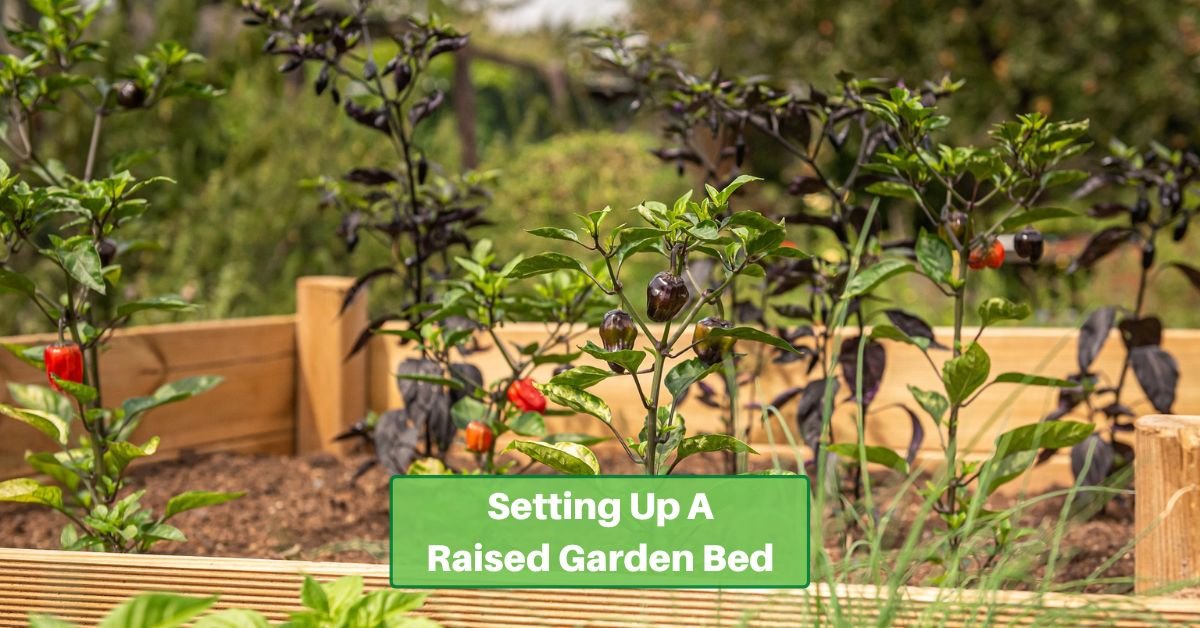Creating a raised garden bed elevates the physical stature of your plants but can also improve the health and productivity of your garden. Raised garden beds offer numerous advantages, from better soil conditions to enhanced pest management, making them an ideal choice for novice and experienced gardeners. This guide will walk you through setting up your raised garden bed, ensuring you’re well-equipped to embark on this rewarding gardening venture.
Planning Your Raised Garden Bed
Choosing the Right Location
The first step in establishing a raised garden bed is selecting the optimal location. Look for a spot that receives ample sunlight—most vegetables and flowers require at least six to eight hours of direct sunlight daily. Consider drainage; you’ll want to be sure your raised beds drain easily into the ground underneath them.
Accessibility is another critical factor; you’ll want your garden bed within easy reach for watering and maintenance, ideally close to a water source and in a spot that you pass regularly to keep your garden top of mind.
Selecting Materials
Raised beds can be constructed from various materials, each offering distinct benefits and aesthetic appeal. Wood is a popular choice for its natural look, affordability, and ease of assembly, with cedar and redwood preferred for their durability and resistance to rot. Metal raised beds, often made from galvanized steel, offer a sleek, modern appearance and excellent longevity, though they can be more expensive. Stone or brick provides a sturdy, permanent structure but requires more effort and expense. Recycled materials, such as composite decking or old barrels, can be repurposed into unique, eco-friendly raised beds.
Determining Size and Shape
The size and shape of your raised garden bed will depend on the available space in your garden and the types of plants you wish to grow.
A typical dimension is 4 feet by 8 feet. That allows easy access to the center of the bed from all sides without stepping into it, so you don’t have to worry about damaging soil structure. The depth of the bed can vary, but 12 to 18 inches is typical, providing ample depth for most vegetable roots.
Consider the pathways around your beds; ensure enough space to move, kneel, and work around your plants comfortably.
Building the Raised Garden Bed
Tools and Supplies Needed
Gathering the right tools and materials before building will make the process smoother. Basic tools include a tape measure, saw (if cutting your materials to size), drill, screws (preferably weather-resistant), and a hammer. You’ll also need your chosen material for the bed walls and, if creating a bottom for the bed, hardware cloth or landscape fabric to allow for drainage while deterring pests.
Step-by-Step Construction Guide
- Prepare the Site: Clear the area of weeds or grass. If placing your bed on grass, consider laying cardboard or several layers of newspaper at the bottom to suppress growth.
- Assemble the Frame: If necessary, cut your materials to the desired length. Construct a simple box shape by attaching the sides at the corners with screws. For added stability, you can use corner posts sunk into the ground.
- Ensure Proper Drainage: If your bed has a bottom, cover it with hardware cloth or landscape fabric, securing it to the frame. If the bed is bottomless, loosen the soil beneath with a fork to promote drainage.
Soil and Compost Mix
Filling your raised bed with the right soil mix is crucial for plant health. A blend of topsoil, compost, and, if needed, a soil conditioner like perlite or vermiculite will create a nutrient-rich, well-draining environment for your plants to thrive. Aim for a balance that supports moisture retention while allowing excess water to drain away, preventing root rot.
By carefully planning and constructing your raised garden bed, you create a foundation for a productive and enjoyable gardening experience. With the right location, materials, and soil, your raised bed will be ready to support a lush garden that’s both beautiful and bountiful.
Planting in Your Raised Garden Bed
Choosing Plants
Selecting the right plants for your raised bed is crucial. Consider the depth of the bed and the root requirements of the plants you wish to grow. Vegetables like carrots and potatoes thrive in deeper beds, while herbs and lettuces can manage with less soil.
Factor in sunlight requirements and plant compatibility. Some plants benefit from being near particular neighbors, a practice known as companion planting.
Layout and Spacing
Maximize your raised bed’s yield through strategic layout and spacing. Adopt square-foot gardening principles to divide your bed into grids, ensuring each plant has enough room to grow without overcrowding. Utilize vertical space by adding trellises or stakes for climbing plants like tomatoes, peas, and cucumbers, enhancing air circulation and sun exposure for healthier plants.
Watering and Maintenance
Raised beds may require more frequent watering than ground-level gardens, as they can dry out faster. Implement a consistent watering schedule, ideally in the morning, to optimize soil moisture levels. Drip irrigation systems or soaker hoses can provide efficient, targeted watering. Regularly check your plants for signs of pests or disease and address any issues promptly to maintain a healthy garden environment.
Advantages of Raised Garden Beds
Improved Soil Conditions
One of the most significant benefits of raised garden beds is the ability to control soil quality. By filling beds with a custom soil mix, gardeners can create the ideal growing environment, free from soil compaction and rich in nutrients, fostering robust plant growth.
Pest and Weed Control
The elevated design of raised beds can deter some ground pests, and the contained space makes it easier to manage weeds and apply mulches effectively. Physical barriers, such as copper tape, can also be added to the sides of raised beds to repel slugs and snails.
Extended Growing Season
Raised beds warm up more quickly in the spring than in-ground beds, extending the growing season. This warmth accelerates seed germination and plant growth, allowing for earlier planting and, in some cases, multiple harvests in a season.
Additional Tips for Success
Mulching and Fertilization
Apply mulch to your raised bed to retain moisture, regulate soil temperature, and suppress weeds. Organic mulches, like straw or wood chips, can also add nutrients to the soil as they decompose. Fertilize your garden based on the specific needs of your plants, using organic options like compost or fish emulsion to provide a slow, steady supply of nutrients.
Crop Rotation and Succession Planting
Rotate crops in your raised bed to prevent soil depletion and reduce the risk of disease and pests associated with specific plant families. Succession planting, or planting new crops as others are harvested, ensures a continuous supply of vegetables throughout the growing season.
Accessibility Features
For gardeners with mobility issues or who prefer not to bend or kneel, raised beds can be built at a higher level or even on legs. These adaptations make gardening more accessible and enjoyable for everyone.
Setting up and maintaining a raised garden bed offers a rewarding pathway to gardening success. Through careful planning, strategic planting, and regular maintenance, raised beds can yield bountiful harvests, enhance garden aesthetics, and provide a fulfilling gardening experience.
Whether you’re a novice gardener or a seasoned green thumb, raised bed gardening opens up a world of possibilities for growing healthy, vibrant plants in an environmentally friendly and sustainable manner. With these tips and strategies, you’re well-equipped to create and nurture a raised garden bed that will be the envy of the neighborhood and a source of joy for seasons to come.









